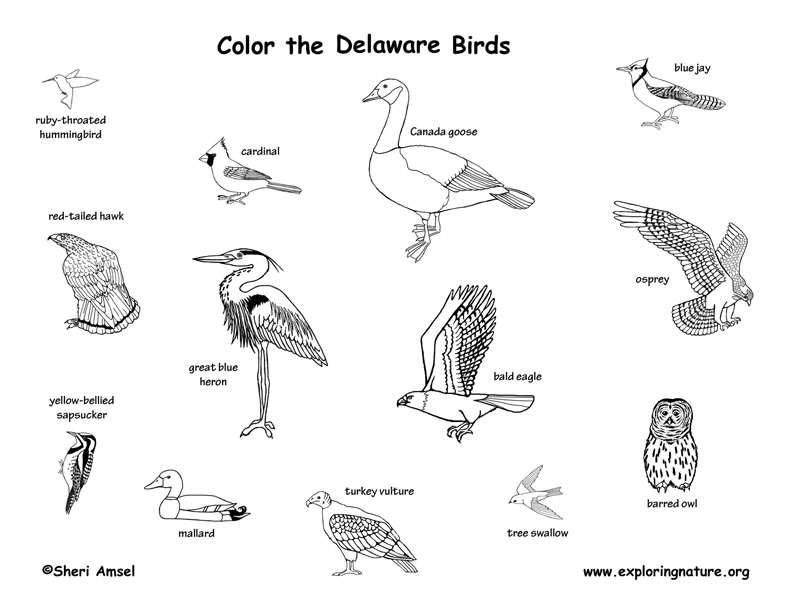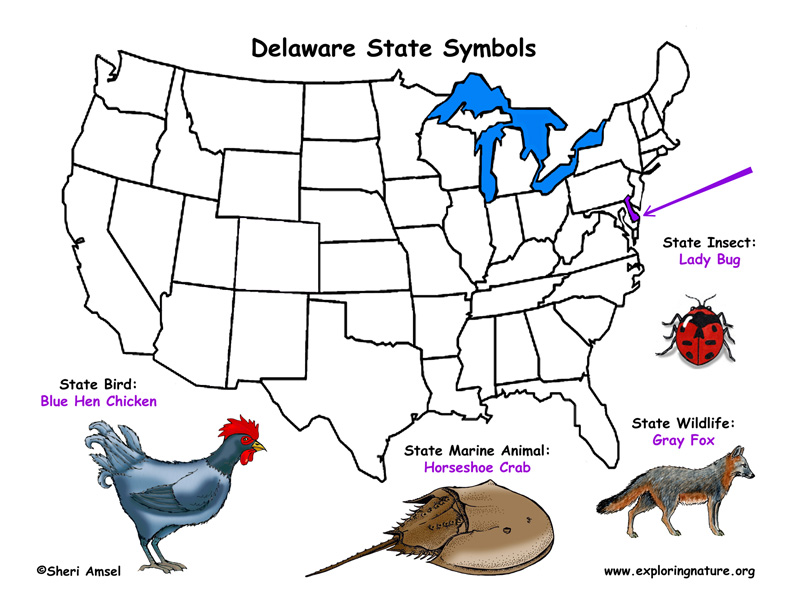

Delaware is a small state (second smallest after Rhode Island) tucked in between Maryland and the Chesapeake Bay and Atlantic Ocean. Most of Delaware falls into the Atlantic Coastal Plain which is flat, sandy land with some coastal wetlands. The northern part of the state by the Pennsylvania border is in the Appalachian Piedmont Region so has a few more rolling hills.
Forest
When the Europeans arrived by ship on the east coast of what would become Delaware, the region was covered in forests of giant oaks, hickories, pines and cypress. Over the next two hundred years, the state was cleared for lumber and settlement. Today, Delaware's forests cover about 30% of the state (375,000 acres) with 93% of the forest land privately owned. Delaware's forests are fragmented. This means that no one forested area is very large. This is unfortunate for migrating birds and other wildlife who need intact forest to find food and safe breeding sites. Delaware's forest is made up of a mix of trees. More than half the forest is made up of oak-hickory. Pine and oak-pine forest makes up about 25% of the forest. Red maples are on the rise and make up about 15% of the forest. Loblolly pine used to be the most common tree but between harvesting and the natural maturing of the forests, they are in decline.
Wetlands
Wetlands are very important habitats, but until recently they were thought to be of no use to man. Wet and buggy, they were considered wasted land. Developers drained them, filled them in with tons of soil and built houses, businesses, roads, farms, airports and parking lots. We now know that wetlands are actually very important natural communities. They provide valuable wildlife habitat, stabilize shorelines and protect the land from storm surges and flooding. They act as filters for pollutants that run off the land from farms, towns and cities. Delaware is thought to have lost as much as 54% of its original wetlands - much of that lost in the late 1900s when other states were already protecting their remaining wetland habitats. Today, only about 25% of Delaware is wetland habitat with a quarter of that being tidal wetlands along Delaware's extensive coastline.
Delaware's wetlands include salt marshes, brackish and freshwater tidal marshes, estuaries, tidal zones, forested swamps.
Salt marshes and freshwater tidal marshes are vital, rich ecosystems and important habitat for many animals and plants. They act as a boundary between saltwater wetland habitats and dry land. They are rich with plants and animal life that can tolerate salt and the rising and falling tides. The matted roots of plants help protect the coast from erosion and storm surges while polluted runoff from land is filtered before reaching the ocean. They are also an important niche for fish and invertebrate nurseries.
An estuary is where freshwater rivers and streams reach the ocean and mix with the seawater. Estuaries are often protected from the open ocean by mudflats where low wave action results in a build up of sediments.
Non-tidal wetlands are swamps (forested wetlands) like Delaware's Atlantic White Cedar and Maple-alder swamps.
For more information about Delaware's habitats (off-site) resource: Forest
Amphibians
Reptiles
To look up individual birds go to the Exploring Nature Birds Database.
When you research information you must cite the reference. Citing for websites is different from citing from books, magazines and periodicals. The style of citing shown here is from the MLA Style Citations (Modern Language Association).
When citing a WEBSITE the general format is as follows.
Author Last Name, First Name(s). "Title: Subtitle of Part of Web Page, if appropriate." Title: Subtitle: Section of Page if appropriate. Sponsoring/Publishing Agency, If Given. Additional significant descriptive information. Date of Electronic Publication or other Date, such as Last Updated. Day Month Year of access < URL >.
Amsel, Sheri. "Delaware Habitats, Mammals, Birds, Amphibians, Reptiles" Exploring Nature Educational Resource ©2005-2024. December 13, 2024
< http://exploringnature.org/db/view/Delaware-Habitats-Mammals-Birds-Amphibians-Reptiles >








